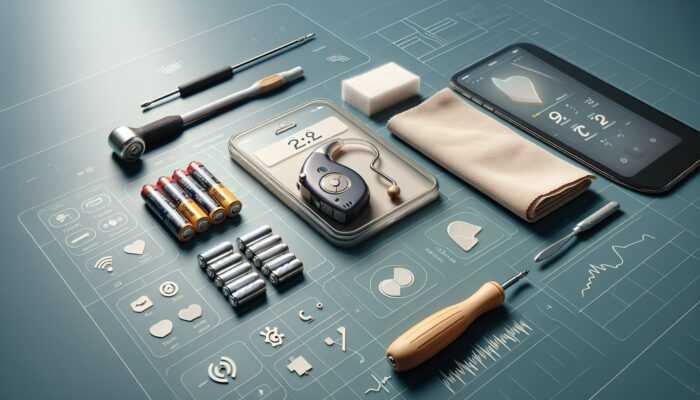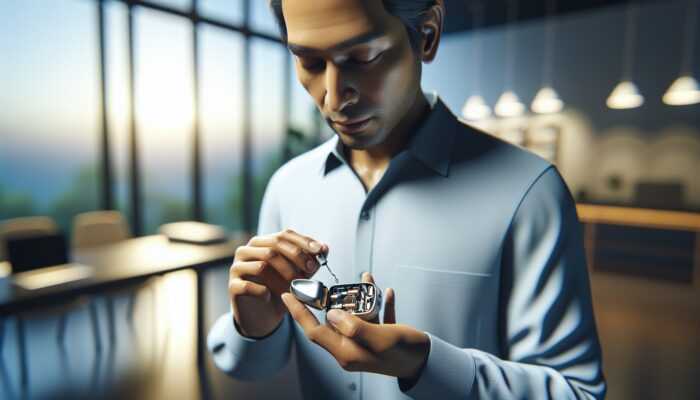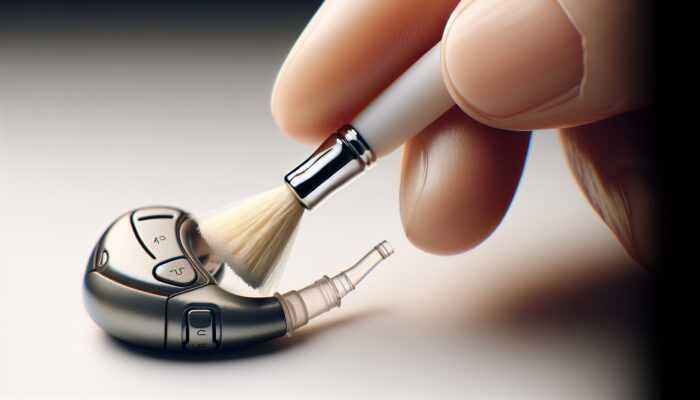Last Updated on 21/11/2025 by Admin
Understanding the Impact of Medications on Hearing Health
What Medications Are Commonly Linked to Hearing Issues?
Medications serve a crucial function in managing a variety of health conditions; however, certain commonly prescribed drugs can adversely affect hearing health. Many of these medications possess ototoxic properties, meaning they can inflict damage on the structures within the inner ear and disrupt the auditory pathways. A selection of prevalent medication types known to influence hearing includes:
- Aminoglycoside antibiotics
- Chemotherapy agents
- Non-steroidal anti-inflammatory drugs (NSAIDs)
- Loop diuretics
- Salicylates (like aspirin)
- Quinine and other anti-malarial drugs
- Antidepressants
- Certain antivirals
These medications are often essential for treating infections, managing pain, or addressing chronic health issues. However, it is vital for both patients and healthcare professionals to be aware of their possible side effects to ensure informed decisions regarding treatment options.
How Do Medications Cause Ototoxicity?
Ototoxicity defines the phenomenon wherein specific medications cause harm to the ear, potentially leading to hearing loss or balance disorders. The pathways through which these medications inflict ototoxic effects are varied and complex. Many drugs can disrupt the precise fluid equilibrium within the inner ear or damage the hair cells responsible for translating sound waves into electrical signals for the brain. The disruption may occur through various mechanisms, including:
– Direct toxicity to the hair cells
– Interference with oxidative stress responses
– Changes in blood circulation to the inner ear structures
A comprehensive understanding of these mechanisms is crucial for identifying patients who may be at risk, thereby enabling timely interventions and adjustments in treatment plans to help protect hearing health.
Why Is Regular Monitoring of Hearing Health Important?
Ongoing monitoring of hearing health is vital, particularly for individuals prescribed medications known to be ototoxic. Consistent evaluation allows for the early detection of potential hearing problems, which enables healthcare providers to modify treatment plans as necessary. The importance of routine check-ups cannot be overstated; these appointments allow for:
– Swift identification of any changes in hearing function
– Educating patients about the signs and symptoms of ototoxicity
– Ensuring adherence to monitoring protocols
Proactive monitoring can identify hearing decline at an early stage, providing opportunities for intervention that could reverse or lessen damage before it escalates.
Expert Insights on the Effects of Medications on Hearing Health
How Can We Detect Ototoxicity Early?
The early identification of ototoxicity is essential for minimizing the risks associated with hearing loss. Symptoms such as Tinnitus (ringing in the ears) or a noticeable reduction in hearing ability often signify ototoxic effects. Healthcare professionals advocate for routine audiometric evaluations for patients taking high-risk medications. Additionally, awareness of other indicators like balance problems and sensations of fullness in the ear is crucial for effective early detection.
Expert analysis suggests that employing standardized screening tools can significantly improve the identification process. Conducting hearing assessments before, during, and after treatment enables more precise monitoring of auditory function. This proactive strategy facilitates timely interventions whenever adverse effects arise, which may involve adjusting medications or implementing supportive therapies.
What Role Do Pharmacists Play in Managing Ototoxic Medications?
Pharmacists play a crucial role in overseeing medications that may impact hearing. Their extensive understanding of drug interactions and side effects equips them to provide valuable guidance to both patients and healthcare providers. For instance, pharmacists can review a patient’s medication profile to pinpoint potential ototoxic medications. In practice, pharmacists often intervene during medication dispensing by informing patients about possible side effects and advising them on the importance of reporting any auditory changes.
Moreover, pharmacists contribute significantly to creating strategies aimed at reducing the risks of hearing loss. This may involve recommending lower doses, alternative medications, or adjunct therapies that help safeguard hearing health. Their accessibility and expertise render them an indispensable resource in the comprehensive management of patients undergoing treatments associated with ototoxicity.
What Strategies Enhance Patient Education on Ototoxic Medications?
Providing effective education to patients about the risks linked to ototoxic medications is of paramount importance. Healthcare professionals should enable patients with information about their medications and the potential side effects involved. Actionable strategies for effective patient education include:
- Providing written resources detailing medications and their ototoxic potential
- Encouraging the maintenance of a symptom diary by patients
- Scheduling regular follow-ups to discuss hearing health
- Implementing teach-back methods to ensure patient understanding
By equipping patients with this crucial information, they are more likely to recognize early signs of hearing impairment and seek medical advice promptly, ultimately fostering improved hearing health outcomes.
Medications Associated with Hearing Loss: A Detailed Overview
Understanding Aminoglycoside Antibiotics and Their Risks
Aminoglycoside antibiotics represent a well-known category of medications critical for treating serious bacterial infections. However, their ototoxic properties can lead to considerable hearing impairment. Commonly utilized aminoglycosides, such as gentamicin and tobramycin, have been linked to damage to the hair cells in the inner ear, often resulting in irreversible hearing loss.
The mechanism behind this ototoxicity involves the drug accumulating in the inner ear, disrupting the function of sensory hair cells. Patients undergoing treatment with these antibiotics should be closely monitored, particularly those with pre-existing hearing issues or those on prolonged therapy. Regular audiometric testing throughout treatment can help detect any emerging hearing problems early.
How Chemotherapy Agents Contribute to Hearing Damage
Certain chemotherapy drugs are known to induce hearing loss as a side effect, with cisplatin being one of the most frequently associated agents. Cisplatin can lead to both auditory and vestibular toxicity, affecting balance and auditory perception. Other chemotherapy agents, including carboplatin and oxaliplatin, also present similar risks.
The implications of these chemotherapy agents on hearing health raise significant concerns, especially among pediatric populations who may endure long-lasting effects. Healthcare professionals often recommend baseline hearing assessments prior to starting chemotherapy and periodic evaluations throughout treatment to track any changes in hearing.
Loop Diuretics: A Hidden Risk for Hearing Health
Loop diuretics, commonly prescribed for conditions like heart failure and hypertension, also pose risks to hearing health. Medications such as furosemide and bumetanide can cause ototoxicity, especially when administered at high doses or to patients with renal impairment.
The mechanism by which loop diuretics contribute to hearing issues involves alterations in fluid balance within the inner ear. Changes in electrolyte levels and fluid concentrations can disrupt the delicate environment required for optimal auditory function. Therefore, healthcare providers must weigh the risks against the benefits when prescribing these medications and ensure that patients receive appropriate monitoring throughout their treatment.
How Do Medications Induce Hearing Damage?
What Is the Impact of Medications on Hair Cells?
Medications can inflict significant damage on the hair cells located within the inner ear, which are essential for converting sound vibrations into electrical signals. This damage may lead to sensorineural hearing loss, characterized by a diminished ability to perceive sound and comprehend speech. The biological processes involved in this damage consist of:
– Disruption of mitochondrial function within hair cells
– Induction of apoptosis or cell death in these vital cells
– Impairment of signal transduction processes that influence auditory perception
Grasping these mechanisms is critical for developing strategies aimed at protecting hair cells from the harmful effects of ototoxic medications. Ongoing research into protective agents and interventions continues to evolve, focusing on safeguarding hearing health.
How Medications Affect the Auditory Nerve
Certain medications also pose risks to the auditory nerve, which can lead to hearing loss. These drugs may impair the nerve’s capability to transmit sound signals from the inner ear to the brain, resulting in difficulties with auditory processing. The extent of nerve function impact varies depending on the specific medication and its dosage.
In clinical settings, healthcare providers must remain vigilant regarding the potential for auditory nerve damage, particularly in patients receiving high doses of ototoxic medications. Regular audiological evaluations can help identify any dysfunctions in the auditory nerve, allowing for timely interventions that can mitigate the impact on hearing health.
The Role of Reactive Oxygen Species in Ototoxicity
Reactive oxygen species (ROS) generated by certain medications can significantly contribute to ototoxicity. These unstable molecules may lead to oxidative stress, damaging cellular components in the inner ear, including hair cells and auditory neurons. Medications such as aminoglycosides and cisplatin are particularly recognized for their capacity to produce ROS, perpetuating a cycle of cellular damage.
Research indicates that antioxidants could potentially help alleviate these effects by neutralizing ROS and protecting auditory structures from harm. Investigating the use of antioxidant therapies alongside ototoxic medications represents a promising field for future research, with the potential to improve hearing health outcomes for affected patients.
Preventive Strategies for Medication-Induced Hearing Loss
What Are the Best Practices for Preventing Hearing Loss?
Implementing preventive measures can significantly mitigate the risk of medication-induced hearing loss. Healthcare providers should embrace best practices to protect patients’ auditory health. Essential preventive strategies include:
- Utilizing the lowest effective dose of ototoxic medications
- Conducting routine hearing assessments
- Educating patients about the signs of hearing impairment
- Encouraging hydration and maintaining electrolyte balance during diuretic therapy
These practices not only help prevent hearing loss but also facilitate early detection, allowing for swift intervention if any issues arise.
Examining the Use of Antioxidants in Hearing Preservation
Antioxidants have garnered attention for their potential to counteract the ototoxic effects of certain medications. By neutralizing reactive oxygen species generated during medication metabolism, antioxidants may offer protective benefits for auditory structures. Commonly studied antioxidants include vitamins C and E, which have shown promise in preclinical studies for their ability to protect against ototoxicity.
However, while antioxidants could provide potential advantages, their effectiveness is not universally established. Healthcare providers should evaluate individual patient needs and existing research when recommending antioxidant supplementation, ensuring that approaches to hearing preservation are tailored to each situation.
Why Is Open Communication Important Between Patients and Doctors?
Effective communication between patients and healthcare providers is vital for managing the risks associated with ototoxic medications. Open dialogue cultivates an environment where patients feel empowered to express concerns about hearing changes and ask questions related to their treatment plans. Strategies to enhance communication include:
– Regularly scheduled check-ins to discuss health status
– Utilizing clear, uncomplicated language to explain risks
– Fostering a culture where patients feel comfortable reporting symptoms
Strengthening this relationship enhances patient comprehension and adherence to monitoring protocols, ultimately leading to improved outcomes in hearing health.
Research Insights into Medication Effects on Hearing Health
What Does Research Reveal About Ototoxicity?
Research provides essential insights into how medications affect hearing and strategies for mitigating these effects. Numerous studies have explored the prevalence of ototoxicity among patients treated with common ototoxic medications, revealing significant rates of hearing loss within these populations. Ongoing research emphasizes the importance of monitoring and patient education in managing these risks effectively.
Key findings from these investigations highlight the necessity of proactive hearing assessments, especially for patients receiving treatment with agents recognized for their ototoxic potential. By incorporating these insights into clinical practice, healthcare providers can improve patient outcomes and preserve hearing health.
Advancements in Protective Therapies Against Ototoxicity
Recent advancements in protective therapies offer hope for reducing the impact of ototoxic medications on hearing health. Research is ongoing into various pharmacological agents that may protect the inner ear from damage during the administration of ototoxic drugs. These protective strategies could involve novel compounds designed to counteract oxidative stress or enhance cellular repair mechanisms.
As scientific understanding continues to evolve, integrating these protective therapies into clinical practice could greatly transform the management of patients requiring ototoxic medications, paving the way for safer treatment protocols.
Future Directions in Ototoxicity Research
Ongoing research aims to deepen our understanding of the mechanisms behind medication-induced hearing loss and develop strategies for its prevention. Future studies are likely to focus on identifying genetic markers that indicate susceptibility to ototoxicity, which can inform individualized treatment plans. Furthermore, exploring the benefits of combination therapies that utilize protective agents alongside ototoxic medications may yield promising results in safeguarding hearing health.
Research initiatives promoting collaboration among audiologists, pharmacists, and physicians will be essential in advancing our understanding of ototoxicity and improving patient care.
How Dosage and Duration Affect Hearing Health
Research indicates that the dosage and duration of medication exposure can have a substantial impact on hearing health. Higher dosages and prolonged use of ototoxic medications correlate with an increased risk of hearing loss. Understanding this relationship is critical for healthcare providers when prescribing these medications, as it informs decisions regarding treatment duration and monitoring strategies.
Tailoring medication regimens to minimize dosages while still achieving therapeutic objectives can help mitigate the risks associated with ototoxicity. Conducting regular audiometric evaluations during treatment can further assist in early identification of any adverse effects, allowing for timely adjustments to treatment plans.
Importance of Monitoring and Early Interventions
Effective monitoring and early intervention are vital in preventing or lessening hearing loss caused by medications. Strategies may include implementing routine audiological assessments for patients prescribed ototoxic medications, providing educational resources about the importance of reporting hearing changes, and developing individualized monitoring plans based on patient risk factors.
Through early identification and a proactive approach, healthcare providers can respond swiftly to any auditory concerns, potentially preventing permanent hearing loss and ensuring better overall health outcomes for patients.
Symptoms and Diagnosis of Hearing Loss Induced by Medications
What Symptoms Should Patients Be Aware Of?
Patients undergoing treatment with ototoxic medications should remain vigilant for common symptoms of medication-induced hearing loss. Noteworthy symptoms include:
- Tinnitus (ringing or buzzing in the ears)
- Difficulty hearing conversations or sounds
- Feeling of fullness or pressure in the ears
- Balance issues or dizziness
Prompt recognition of these symptoms is essential, as early communication with healthcare providers can lead to timely interventions and adjustments in treatment plans. Patients should be encouraged to actively monitor their auditory health and report any changes to their healthcare team.
How Is Hearing Loss Diagnosed by Healthcare Providers?
Diagnosing hearing loss necessitates a comprehensive approach that employs various tests. Audiometry is a commonly utilized method to evaluate a patient’s hearing capacity across different frequencies. Otoacoustic emissions (OAEs) testing may also be used, measuring sound waves generated by the inner ear in response to auditory stimuli.
Healthcare providers will also conduct a thorough review of the patient’s medical history, considering factors such as medication use and previous hearing assessments. This multifaceted diagnostic process ensures accurate identification of any hearing impairments and informs subsequent management strategies.
What Treatment Options Are Available for Hearing Loss Induced by Medications?
Treatment options for medication-induced hearing loss can vary widely based on individual circumstances. In some cases, it may be necessary to adjust or change the ototoxic medication to prevent further deterioration of hearing function. Additionally, the use of hearing aids or cochlear implants may be indicated for patients experiencing significant hearing loss.
Rehabilitation programs and auditory training can also contribute to assisting patients in adjusting to changes in hearing ability and improving communication strategies. An individualized approach to treatment ensures that each patient’s unique needs and circumstances are effectively addressed.
Effective Management and Treatment of Medication-Induced Hearing Loss
What Immediate Actions Should Be Taken If Symptoms Arise?
If a patient observes symptoms of hearing loss, immediate steps should be taken to address the issue. Key actions include:
- Consulting a healthcare provider for a thorough assessment
- Discussing potential adjustments to current medications
- Scheduling hearing tests to evaluate auditory function
- Documenting any symptoms and their progression
Taking these steps promptly can facilitate early intervention, potentially reversing or reducing hearing impairment caused by medications.
What Are the Long-Term Management Strategies for Hearing Loss?
Long-term management of hearing loss associated with medications requires a comprehensive approach. Regular monitoring of hearing status is essential for detecting changes over time. Patients may benefit from using hearing aids, cochlear implants, or assistive listening devices to enhance their communication capabilities.
Furthermore, ongoing education about hearing preservation strategies and optimizing treatment regimens can empower patients to take an active role in managing their hearing health. Continued collaboration between patients and healthcare professionals is crucial for ensuring effective long-term management.
How Do Hearing Aids and Cochlear Implants Assist Patients?
Hearing aids and cochlear implants are critical tools for managing hearing loss resulting from medications. Hearing aids amplify sound and can significantly improve communication for individuals with mild to moderate hearing loss. In contrast, cochlear implants directly stimulate the auditory nerve, typically serving those with severe to profound hearing loss.
These devices can enhance the quality of life for patients, enabling them to participate more fully in social and professional settings. Ensuring access to audiological services and educational resources regarding these interventions is vital for maximizing their benefits.
Are There Alternative Therapies and Supplements for Hearing Loss?
Exploring alternative therapies and supplements may provide additional support for managing medication-induced hearing loss. Some patients may consider herbal remedies or dietary supplements that are claimed to promote auditory health. However, the effectiveness of these treatments can vary, and their potential interactions with prescribed medications should be carefully evaluated.
Healthcare professionals should assist patients in assessing alternative therapies, advocating for evidence-based approaches while remaining open to complementary strategies that may enhance hearing preservation.
What Preventive Measures Should Be Taken for Future Medication Use?
To minimize the risk of hearing loss from future medication use, several preventive strategies should be implemented. Patient education plays a fundamental role, with healthcare providers emphasizing the importance of discussing medication side effects.
Monitoring protocols should incorporate baseline hearing assessments prior to initiating potentially ototoxic treatments and regular follow-ups to assess hearing function. Moreover, adopting a shared decision-making approach between patients and healthcare providers is essential for optimizing treatment plans while minimizing risks to hearing health.
Key Resources and Information for Patients and Providers
What Are the Key Takeaways for Understanding Hearing Health?
Grasping the profound impact of medications on hearing health is vital for both patients and healthcare providers. Key takeaways include:
- Numerous common medications can lead to ototoxicity and subsequent hearing loss.
- Regular monitoring and early detection are imperative for managing potential auditory changes.
- Effective communication between patients and healthcare providers enhances understanding and adherence.
- Preventive strategies and education are crucial for safeguarding hearing health.
Where Can More Information on Hearing Health Be Found?
Patients and healthcare providers seeking additional information regarding medication-induced hearing loss can explore various valuable resources, including:
– Websites from reputable audiology organizations
– Patient advocacy groups focused on hearing health
– Educational materials from healthcare institutions specializing in ototoxicity and hearing preservation
– Scientific journals and articles that examine recent research findings on hearing health and medications
These resources can offer comprehensive insights and support for managing the complexities of medication-related hearing issues.
Why Is Awareness and Action Critical for Hearing Health?
Increasing awareness about the risks associated with ototoxic medications and taking proactive measures to protect hearing health are essential. Patients should remain informed about their treatment options and potential side effects, while healthcare providers must prioritize open communication and regular monitoring.
By fostering a culture of awareness and responsiveness, the healthcare community can significantly improve outcomes for individuals at risk of medication-induced hearing loss, ultimately enhancing their quality of life.
Frequently Asked Questions (FAQs)
What is ototoxicity?
Ototoxicity refers to the characteristic of certain medications that may cause damage to the inner ear, resulting in hearing loss or balance-related issues.
Which medications are most commonly associated with hearing loss?
Commonly prescribed medications linked to hearing loss include aminoglycoside antibiotics, chemotherapy agents, and loop diuretics.
What symptoms should I monitor when taking ototoxic medications?
Symptoms to be aware of include tinnitus, difficulty hearing, a sensation of fullness in the ears, and balance problems.
How is hearing loss diagnosed by healthcare professionals?
Hearing loss can be diagnosed through audiometric testing and otoacoustic emissions tests, along with a thorough review of medical history and symptoms.
What should I do if I notice changes in my hearing while on medication?
If you observe changes in your hearing, consult your healthcare provider immediately to discuss your symptoms and possible adjustments to your medication.
Are there preventive measures to avoid medication-induced hearing loss?
Preventive measures include using the lowest effective dose of medications, conducting regular hearing assessments, and educating patients about potential side effects.
Can antioxidants be beneficial in protecting against ototoxicity?
Some research suggests that antioxidants may help mitigate ototoxic effects, but their effectiveness can vary and should be used under medical supervision.
What treatment options are available for medication-induced hearing loss?
Treatment options may involve changing medications, utilizing hearing aids, or cochlear implants, depending on the severity of hearing loss.
How often should I have my hearing evaluated if I’m on ototoxic medications?
Regular hearing evaluations should be conducted, ideally before starting treatment and periodically throughout the course of medication use.
Can communication with my healthcare provider influence my risk of hearing loss?
Yes, maintaining open communication with your healthcare provider can help identify risks and facilitate prompt interventions to safeguard hearing health.
Explore our journey on X!
The post Medications and Hearing Health: An Essential Overview appeared first on The Microsuction Ear Wax Removal Network.
The post Medications and Hearing Health: An Essential Overview appeared first on Healthcare Marketing Service.















